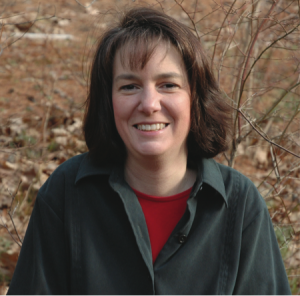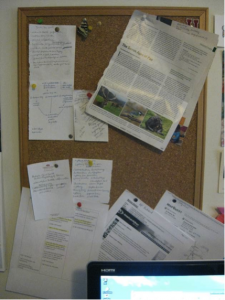This month at ReaderKidZ we’re all about science and math and we’re kicking off November with a fabulous two-part interview with No Monkeys, No Chocolate author Melissa Stewart.
No Monkeys, No Chocolate written by Melissa Stewart and Allen Young, illustrated by Nicole Wong (Charlesbridge, 2013) explains the story of where chocolate comes from in two layered levels of text. Stewart unravels the mystery in a simple text for young readers and follows it up by adding rich expository details for older readers, blending the two together seamlessly. By the end of the story, we’ve discovered the mystery of where chocolate comes from and how the cocoa beans are dependent on the cocoa pods, flowers, leaves, stems, roots, fungi, lizards, midges, maggots and yes – monkeys! Two adorable bookworms add commentary and humor and the back matter gives readers additional information on cocoa and rain forests, and how to be better stewards of the planet.
Melissa Stewart is the award winning author of over 150 science books for children. She believes nothing brings her books to life better than solid research. She has explored tropical rainforests in Costa Rica, traveled on safari in East Africa, and swum with sea lions in the Galapagos Islands, all in order to bring exciting stories to her readers.
ReaderKidZ: Where did the idea to write about No Monkeys, No Chocolate come from?
MS: It was a long, winding road to publication, so I created an Interactive Timeline to tell the story. Get the details here: http://www.melissa-stewart.com/timeline/10yr_timeline.html [Do check it out – it’s fascinating!]
ReaderKidZ: No Monkeys, No Chocolate is co-authored with Allen Young. How did you come to write this book together? He lives in Wisconsin and you live in Massachusetts. Did you write together or apart?
MS: Dr. Young is a curator emeritus of the Milwaukee Public Museum and the world’s leading expert in cocoa tree pollination and growth. He provided key research for the book—information that I couldn’t get anywhere else, but I did all the writing.
ReaderKidZ: How much research went into the writing of No Monkeys, No Chocolate?
MS: I actually researched two books while working on No Monkeys, No Chocolate. One that never got published and one that did—eventually. I spent about a year doing research, but the final critical details came from Dr. Young.

ReaderKidZ: Can you offer young people any research tips?
MS: I have four ways of getting information for all the books I write:
- reading books, magazines, and newspapers
- personal observations in the natural world
- interviewing scientists and other experts
- the internet
Sometimes I read webpages for basic background information, but my most critical use of the internet is to find experts in the subjects I write about.
ReaderKidZ: The monkey species is not named in the book? Do many different monkey species contribute to eating the cocoa pods and scattering the cocoa beans?
MS: The monkey in the book is a capuchin, and these little monkeys spread the most cocoa seeds. A few other small, squirrel-like animals also eat cocoa pulp and spread some seeds.
ReaderKidZ: How do you decide what to write about next? And where do you get your ideas from?
MS: I get ideas all the time—from things I read, people I speak to, places I visit. Getting ideas is easy, but keeping track of them can be hard. That’s why I have an idea board in my office. Whenever I have an idea, I tack it up there. Then, when it’s time to start work on a new book, I look and choose an idea off the board.
Sometimes I research an idea for a while and it turns out not to be as intriguing as I thought it would be. I drop it and move on to something else. Eventually, I find an idea that has all the ingredients for a great book and I dig into the deep research and writing process.
Melissa’s Idea Board
Part 2 of our interview will follow later this week. See you then!











